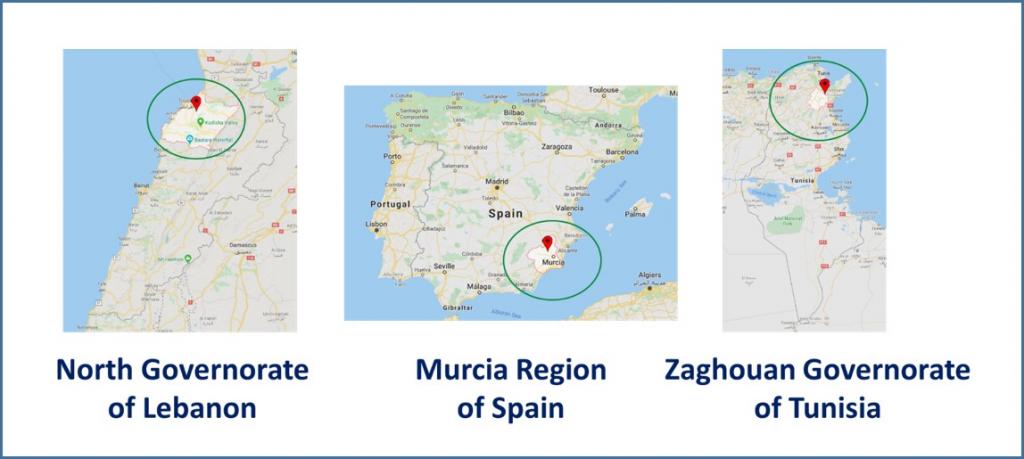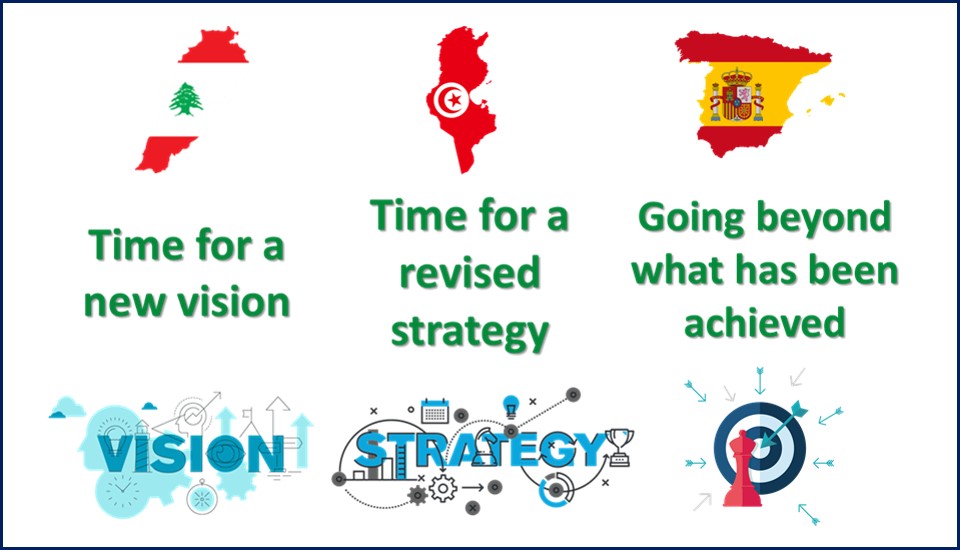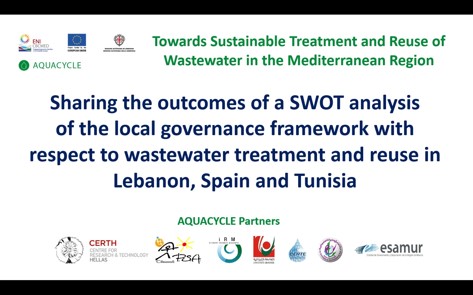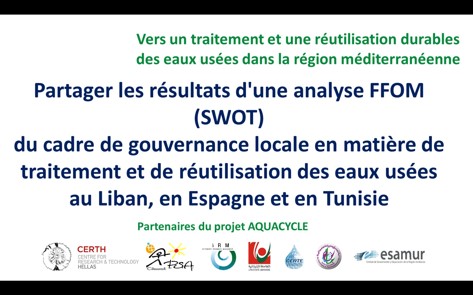AQUACYCLE: Sharing the purpose and outcomes of a SWOT analysis

In addition to a selection of the main outcomes, AQUACYCLE’s latest video clip also brings answers to the questions What, Why, How, Where, For who of a SWOT analysis, which are briefly summarized below.
The text in the video clip is available in English, French and Spanish by clicking on the respective images below.
What is a SWOT analysis?
A SWOT analysis is a technique of identifying Strengths (S), Weaknesses (W), Opportunities (O) and Threats (T) - commonly shortened to SWOT. The technique can be applied to determining and defining the SWOT of a new product, a new technology, a project or even – as in the case here – a given context: the local governance framework with respect to wastewater treatment and reuse.
Why has a SWOT analysis been conducted?
The target outcome of the SWOT analysis conducted in AQUACYCLE is to come up with strategies aimed at changing the paradigm on wastewater treatment and reuse which duly:

How has the SWOT analysis been organized to come up with the intended strategies?
Insights concerning the Strengths, Weaknesses, Opportunities and Threats of the local governance framework have been collected through two complementary approaches. To start with, all public actors at the national and local level and their respective roles with regard to wastewater treatment and reuse were identified through a desk review. Recently implemented and ongoing initiatives by these actors to address the challenges associated with treated wastewater reuse were documented as an integral part of this desk review. The outcomes from the review process were then presented for feedback from a selection of actors in 15 semi-structured one-to-one interviews.
Where has the SWOT analysis been performed?
The SWOT analysis, including the interviews have been implemented for the regions in Lebanon, Spain and Tunisia where the installation and demonstration of the eco-innovative APOC technology is foreseen in the coming months.

For Who are the outcomes of the SWOT analysis intended?
The strategies derived on the basis of the findings from the SWOT analysis are aimed at policy-makers.
To this effect, the findings and proposed strategies are being presented for discussion and feedback on the occasion of the First Series of Stakeholder Workshops in Lebanon, Tunisia and Spain to stimulate a much needed debate on how to change the paradigm for wastewater treatment and reuse.
What are the strategies that were derived from the SWOT analysis?
The strategies proposed by the AQUACYCLE Partnership range from calling for a new vision, a revised strategy, and to take advantage of what has been achieved to go beyond.
Indeed, these strategies reflect the conditions on the ground in the respective case study areas, i.e.
- the poor sanitation situation in Lebanon
- the need for a revised set of measures targeting the safe reuse of treated wastewater in Tunisia
- the opportunity to share the region of Murcia’s high-level expertise in the field of wastewater treatment with other regions in Spain and beyond.













